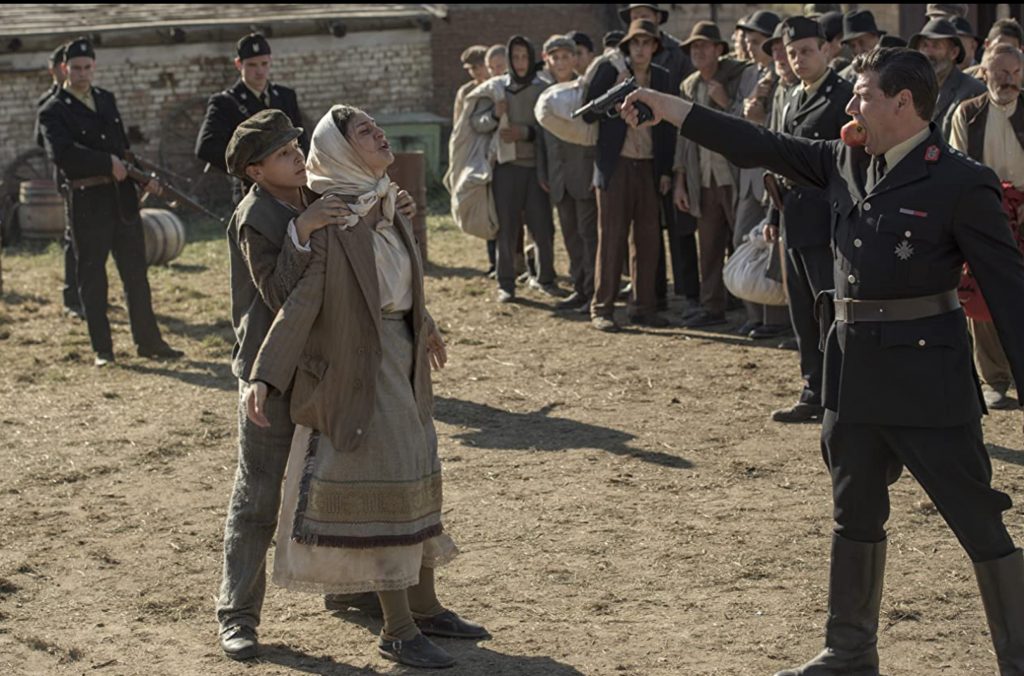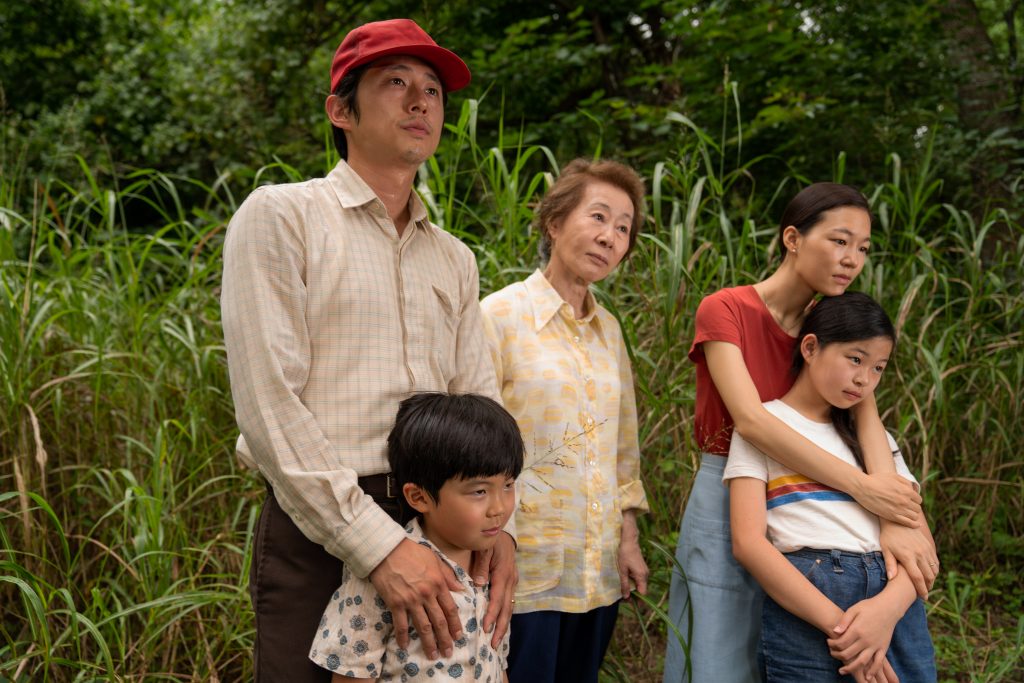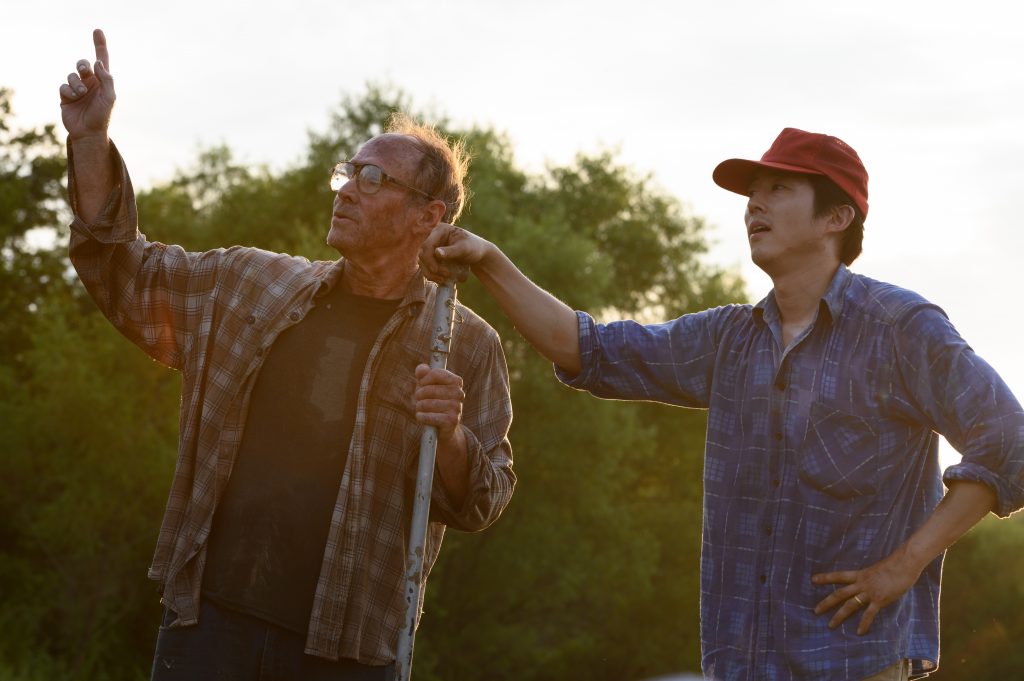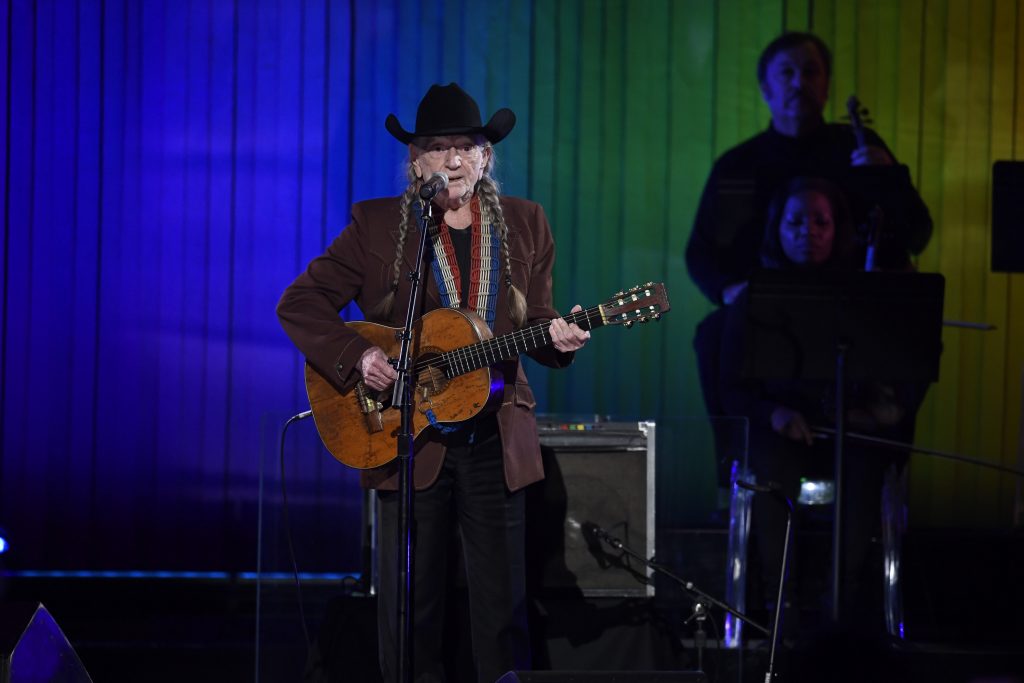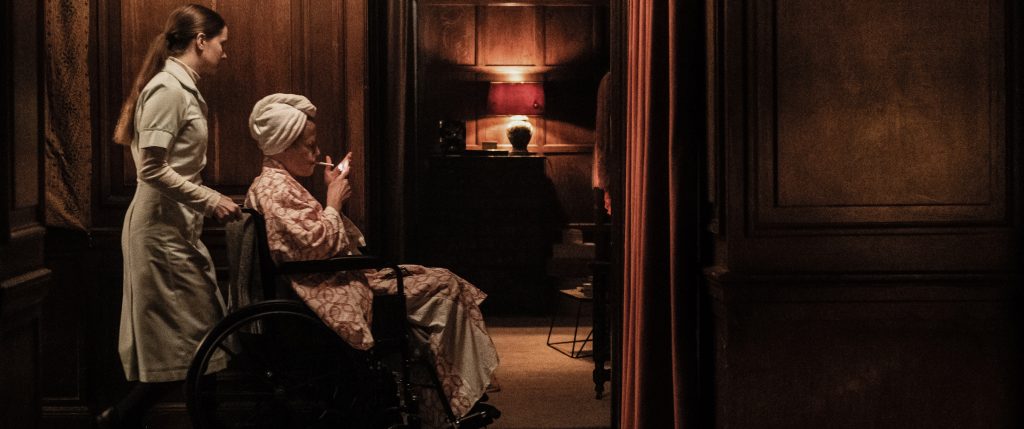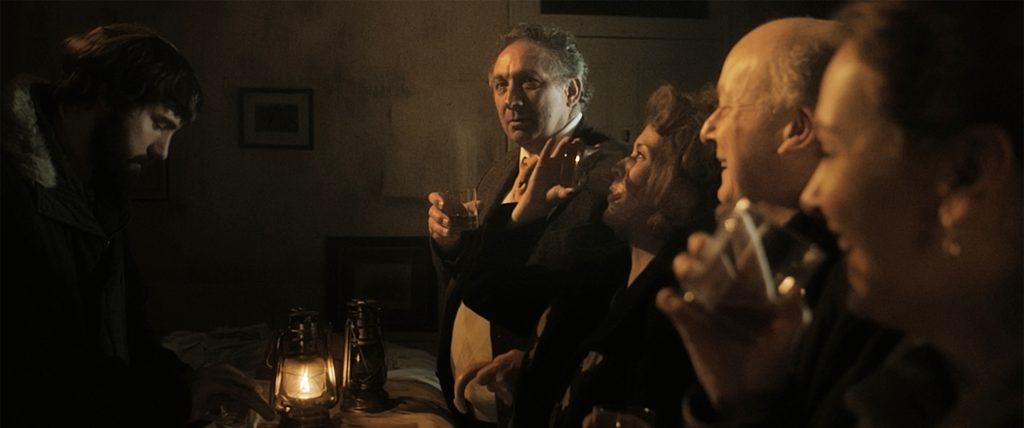February 16, 2021
by Carla Hay
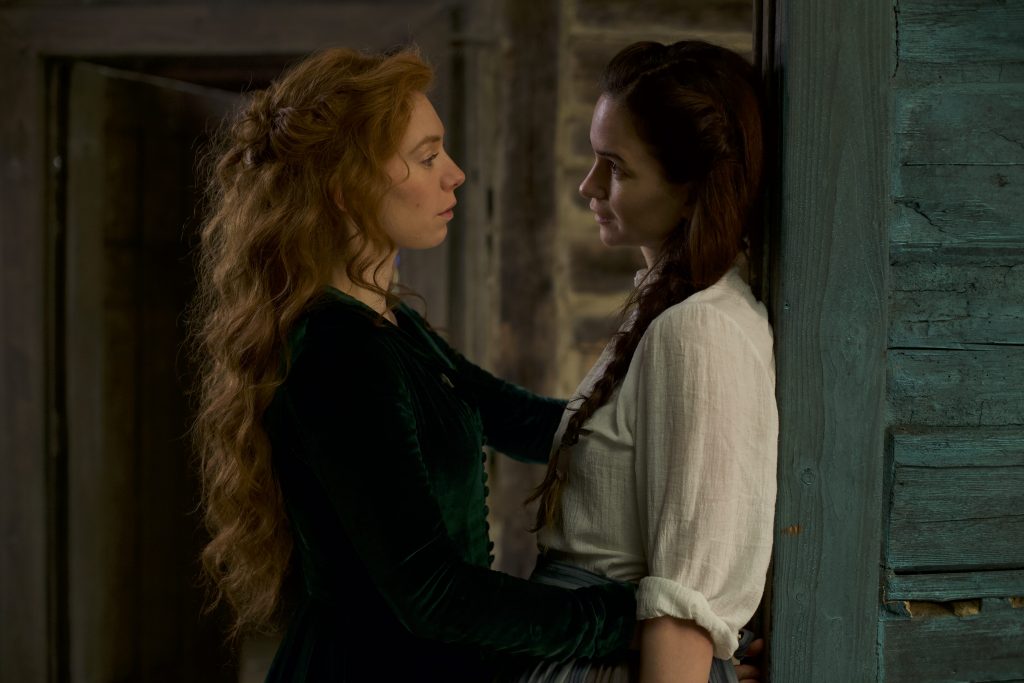
Directed by Mona Fastvold
Culture Representation: Taking place primarily in 1856, in a rural area of Schoharie County, New York, the dramatic film “The World to Come” features an all-white cast of characters representing the working-class and middle-class.
Culture Clash: Two farmers’ wives have a secret love affair with each other while unhappily married to their husbands.
Culture Audience: “The World to Come” will appeal primarily to people are interested in well-acted dramas about LGBTQ romances and how people cope with being in unhappy marriages.

The dramatic film “The World to Come” skillfully immerses viewers into a world filled with layers of oppression for the story’s two female protagonists. The two women are stifled by being in miserable relationships with their husbands; society’s bigotry against same-sex romances; and living in an era where wives could be considered property by their husbands. It’s a story that shows in understated yet poignant details how someone’s greatest love and passion could also be that person’s greatest heartbreak.
Directed with emotional intelligence and sensitivity by Mona Fastvold, “The World to Come” is based on Jim Shepard’s lyrical short story in the 2017 collection, each titled “The World to Come.” Shepard and Ron Hansen adapted the short story into the movie’s screenplay, which is told from the point of view of a farmer’s wife named Abigail (played by Katherine Waterston), whose diary entries are read in voiceover narration. The movie takes place primarily in 1856 in a rural area of Schoharie County, New York, but “The World to Come” was actually filmed in Romania to capture the type of landscape that no longer exists in that part of New York.
Abigail is an introvert who begins keeping a personal diary of her thoughts, after her husband Dyer (played by Casey Affleck) suggested that she keep a business journal for the farm, such as tools lent out and outstanding bills. Abigail begins her diary in January of 1856, and her subsequent voiceovers over the next several months are told with the dates in chronological order.
Dyer, just like Abigail, is quiet and unassuming. They seem to have an ordinary life with their daughter Nellie (played by Karina Ziana Gherasim), who’s 4 years old. But a tragedy strikes that puts both Dyer and Abigail down a path of depression and emotional turmoil.
By February of that year, Nellie has died from diphtheria. Abigail and Dyer, who are already introverted people, become more withdrawn from each other. Not long after Nellie’s death, Dyer becomes ill with a fever, which puts the productivity of the couple’s farm in jeopardy. (They are the only apparent people who work on the farm.)
Abigail barely has time to grieve while taking care of her ailing husband when another farmer couple moves nearby and unexpectedly changes Abigail’s and Dyer’s lives. Tallie (played by Vanessa Kirby) is a vibrant redhead, while her husband Finney (played by Christopher Abbott) is a brooding control freak. During this very depressing time in Abigail’s life, she writes in her diary: “I have become my grief.”
Dyer eventually recovers from his fever, but he and Abigail remain emotionally distant from each other. They refuse to discuss the death of their daughter, because it seems to be too painful for them to even talk about it. Abigail is expected to help Dyer with farm duties, but soon she’ll have someone who will be taking up a lot of her time and attention.
The first time that Abigail is shown talking about Nellie’s death to another person is in her first conversation with Tallie, who has stopped by Abigail’s home for a neighborly visit. Abigail and Tallie’s first conversation happens to be on the day that would have been Nellie’s fifth birthday. When Abigail tells Tallie this information, unbeknownst to the two of them, it’s the birth of something else: a budding romance between Abigail and Tallie.
The two women become fast friends and eventually confide in each other about their deepest feelings. But the respective marriages to their husbands are never that far from their minds. It’s easy for anyone to see that the passion has dwindled in Abigail and Dyer’s relationship. Tallie and Finney’s relationship is not as easy to read, although Tallie tells Abigail: “I suppose he’s unhappy with me because I have yet to give him a child.”
As Abigail says in one of her diary entries that she reads in a voiceover: “Finney and Tallie’s bond confounds me. At times, when their eyes meet, they seem yoked in opposition to one another, while at other times there seems a shared regard.” Abigail remarks in her diary about her growing romantic feelings about Tallie: “There is something going on between us that I can’t unravel.”
Abigail becomes fully aware of how deep her feelings are for Tallie after Tallie becomes ill from being caught in a snowstorm. Abigail becomes distraught over wondering if Tallie will recover. The snowstorm killed about half of the chickens on Abigail and Dyer’s farm, so the couple will be experiencing some hard times in the near future. However, Abigail is more worried about Tallie’s recovery than the farm’s financial loss from the snowstorm.
Tallie seems to appreciate Abigail’s introverted nature when Tallie tells her: “It’s been my experience that it’s not always those who show the least who actually feel the least.” And Abigail describes their blossoming love affair this way in her diary: “I imagine that I love how our encircling feelings leave nothing out for us to wander or seek.”
One day, Tallie gives Abigail an atlas, which is almost symbolic of their wishful thinking of how they could run off together and travel around the world. By the month of May, Tallie and Abigail’s romance of hand holding and hesitant kisses turn into more passionate displays of affection, and they eventually become secret lovers. Their infidelity to their husbands doesn’t come without feeling guilty about it, but Tallie tries to brush it off by telling Abigail: “I hear intimacy builds good will.”
Dyer and Finney can’t help but notice that their wives are spending more and more time together, sometimes for several hours a day. Dyer expresses frustration that Abigail’s devotion to Tallie has come at the expense of Abigail doing work on the farm. Dyer is annoyed, but he doesn’t become abusive about it.
By contrast, Abigail starts to see signs that Tallie is being abused, such as bruises and how Tallie seems genuinely fearful of Finney, while Tallie tries to pretend that everything is fine. Abigail also tries not to think about something Tallie told her soon after they first met: Finney is thinking about moving further west with Tallie. Later in the story, the two couples have dinner together at Tallie and Finney’s home. And it becomes very clear how cruel Finney can be.
The romance of Abigail and Tallie isn’t really a “sexual identity” story, because the movie never makes a point of declaring what their sexual identities are. There’s no big speech or enlightenment moment that Abigail and Tallie have about why they fell in love with each other. Viewers can speculate that Abigail and Tallie are closeted lesbians or bisexuals, or viewers can speculate that Abigail and/or Tallie don’t care what gender their love partner is. In 1850s America, there really were no specific terms for LGBTQ people, and the subject of any non-heterosexuality was so taboo that it was rarely discussed out loud.
“The World to Come” is really about showing how two lonely people met each other and filled a void in each other’s lives. In Tallie and Abigail’s private conversations, it’s clear that Tallie is more sexually experienced and less sheltered than Abigail, even though Abigail is older than Tallie. Abigail mentions that she married Dyer out of convenience, because he was the older son of a neighbor. By contrast, it’s hinted that Tallie is very aware of her allure and had her pick of suitors before she married Finney. It’s implied that Abigail was probably a virgin when she got married, while Tallie was not.
These hints about their sexual history provide some context for what happens later in the story and how Abigail and Tallie react to obstacles that inevitably occur in their relationship. Abigail is the only person who makes Tallie happy, and vice versa, but Abigail has the added emotional agony of losing a child. It explains why there’s a desperate way that Abigail wants to cling to her relationship with Tallie, no matter what the cost.
Waterston, Kirby, Affleck and Abbott all give commendable performances in their roles. As the story goes on, there’s a noticeable change in the personalities of Abigail and Tallie that Waterston and Kirby express in poignant ways. Abigail starts off very shy and unsure of herself, but becomes more determined and outspoken after she falls in love with Tallie. Meanwhile, Tallie starts off as more of a fun-loving free spirit, but she slowly loses her confidence under the burden of being in an abusive marriage.
Affleck’s Dyer stays on a fairly even keel of being a mournful spouse who has trouble expressing his emotions, but Dyer is someone who hasn’t completely lost his humanity and compassion. Abbott’s Finney is the most complex person of the four because, just like many abusers, Finney has a charismatic side and is skilled at fooling people into thinking that he isn’t as bad as he really is. There’s a scene in the movie that also realistically demonstrates how people who suspect domestic abuse often don’t want to be involved in reporting it or helping a suspected victim.
“The World to Come” is not a groundbreaking film, nor is it going to appeal to people who aren’t interested in deliberately paced dramas that take place in the 1800s. Some viewers might also be slightly annoyed by the film’s constant voiceovers by Abigail. However, her writings are a subtle nod to how articulate and intelligent Abigail is, considering that she was not a wealthy woman with the means to get a higher education, in an era when women were discouraged from being as educated as men.
Fastvold’s unfussy directing style is exemplified by the technical choices made in the movie’s costume design, production design and musical score, which all complement the creative aspects of the film without being overwhelming. The farm folks in this story live simply and quietly. If the movie had made Tallie and Abigail’s romance a big melodrama, it wouldn’t ring true for this rural culture of people who live discreetly and don’t want to call attention to themselves.
The actors in this movie’s relatively small cast make the most out of this intimate snapshot of a year in the life of these four people who have been damaged in some way by disillusionment. Tallie and Abigail experience glimmers of hope and a purpose to live because of the unexpected love that they found with each other. But it’s a love where people will inevitably get hurt, and decisions are made on how much of that love is worth any personal sacrifices.
Bleecker Street released “The World to Come” in select U.S. cinemas on February 12, 2021. The movie’s digital/VOD release date is March 2, 2021.




